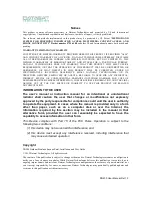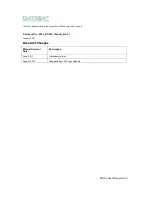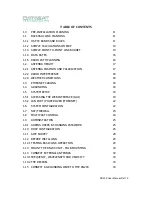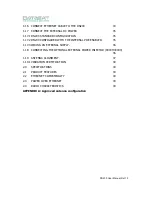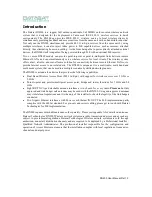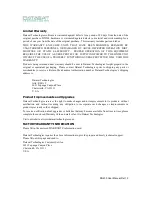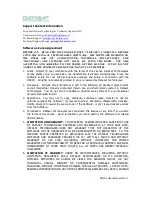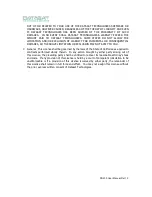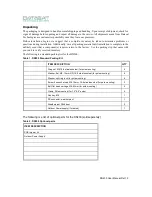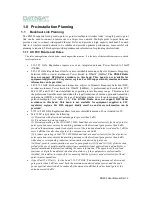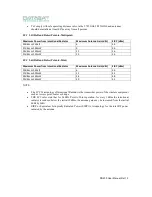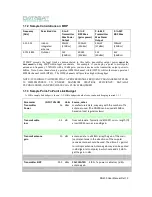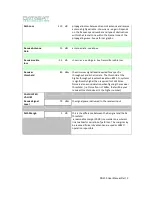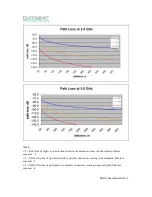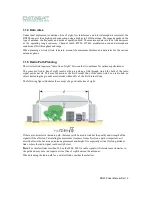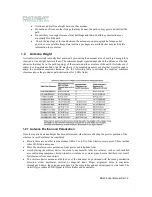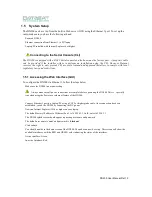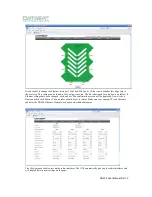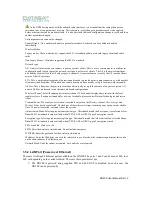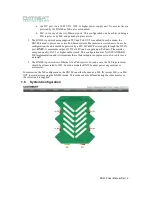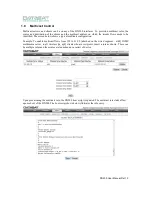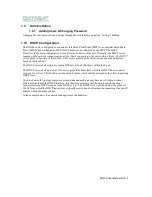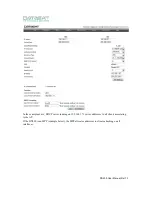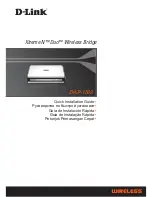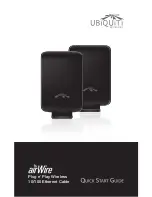
DN200 User Manual Rel 1.0
1.0 Pre-Installation Planning
1.1
Backhaul Link Planning
The DN200 supports fixed point-to-point or point-to-multipoint wireless links. A single point to point
link can be used to connect a remote site to a larger core network. Multiple point to point links can
provide a way to connect widespread Ethernet LANs, and provide a high capacity backhaul. For each
link in a wireless routed network to be reliable and provide optimum performance, some careful site
planning is required. This chapter provides guidance and information for planning wireless links.
1.1.1 US FCC Bands and Rules
The rules and regulations listed below can change without notice. It is the duty of the installer/customer to check
local regulations
•
5.15-5.25 GHz. Regulations require use of an integrated antenna. Power limited to 50mW
(17dBm)
•
5.25-5.35 GHz. Regulations allow for a user-installable antenna, subject to Dynamic Frequency
Selection (DFS, or radar avoidance). Power limited to 250mW (24dBm).
The DN200 Radio
does not support DFS/Radar avoidance in this band. This band is not available for
equipment supplied to FCC regulatory regions. For DFS support kindly email us and more
information can be provided.
•
5.47-5.725 GHz. Both outdoor and indoor use, subject to Dynamic Frequency Selection (DFS,
or radar avoidance). Power limited to 250mW (24dBm). A professional, as described in FCC
Part 15.247 and 15.407 must install devices operating in this frequency range. This means that
the professional installer must understand the legal limitations of antenna gain and transmitter
output power (EIRP), as well as the type of installation whether it is for point-to-point (fixed) or
point-to-multipoint. (see table 1.1.2).
The DN200 Radio does not support DFS/Radar
avoidance in this band. This band is not available for equipment supplied to FCC
regulatory regions. For DFS support kindly email us and more information can be
provided.
•
5.725 to 5.825 GHz. Regulations allow for a user-installable antenna. Power limited to 1W.
•
Part 15.247(c)(iii) states the following:
(c) Operation with directional antenna gains greater than 6 dBi.
(1) Fixed point-to-point operation:
(i) Systems operating in the 2400-2483.5 MHz band that are used exclusively for fixed, point-to-
point operations may employ transmitting antennas with directional gain greater than 6 dBi
provided the maximum conducted output power of the intentional radiator is reduced by 1 dB for
every 3 dB that the directional gain of the antenna exceeds 6 dBi.
(ii) Systems operating in the 5725-5850 MHz band that are used exclusively for fixed, point-to-
point operations may employ transmitting antennas with directional gain greater than 6 dBi
without any corresponding reduction in transmitter conducted output power.
(iii)Fixed, point-to-point operation, as used in paragraphs (c)(1)(i) and (c)(1)(ii) of this section,
excludes the use of point-to-multipoint systems, omnidirectional applications, and multiple co-
located intentional radiators transmitting the same information. The operator of the spread
spectrum or digitally modulated intentional radiator or, if the equipment is professionally
installed, the installer is responsible for ensuring that the system is used exclusively for fixed,
point-to-point operations.
•
As per Part 15.407(a)(1) , for the band 5.15-5.25 GHz, if transmitting antennas of directional
gain greater than 6 dBi are used, both the maximum conducted output power and the peak
power spectral density shall be reduced by the amount in dB that the directional gain of the
antenna exceeds 6 dBi


